NGC 2808 is an old age cluster in the southern constellation Carina. It is one of the largest star clusters in the Milky Way galaxy containing over a million stars across three separate generations of stars which were all born within 200 million years of the formation of the cluster. For NGC 2808 to contain 3 generations of stars, it is believed to possibly be the remnant core of a dwarf galaxy which collided with the Milky Way 8 to 11 billion years ago. Given its magnitude of 6.2 and its distance from Earth, NGC 2808 is not visible with the naked eye but can appear, although quite faintly, when viewed through binoculars or a small telescope.
In a recent study by Garay et al (2024) to report on the results of the analysis of Fe, Mg, Al, and Si abundances in a sample of 439 stars in ω Centauri, it was found that within NGC 2808 is sub-population of stars which is found mostly within small, metal-poor clusters (such as NGC 5824), and very large clusters (such as NGC 2808). This sub-population of stars it characterized by its Mg-Al anticorrelation which presents a discrete shape in the MP and M-int1 subpopulations.
In order to study NGC 2808 and investigate the relationships between the colours, brightness, and the age and chemical composition of the cluster as a whole, I collected 15 images using the Skynet Robotic Telescope Network in the B, R, and V filters with the PROMPT-MO-01 telescope located in Meckering, Australia. The exposure times for each filter consisted of 76 seconds for the B filter, 25 seconds for the R filter, and 57 seconds for the V filter. I then used the Afterglow tool to align and stack the resulting images to produce the following coloured images of NGC 2808 (Figure 1, 2, 3, 4).
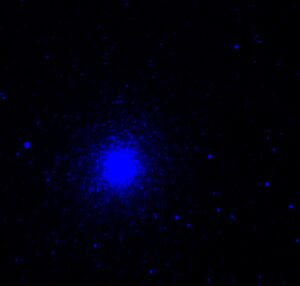

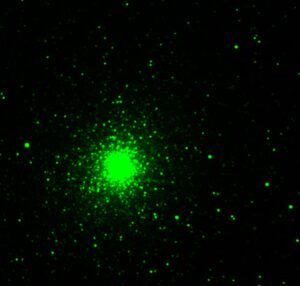
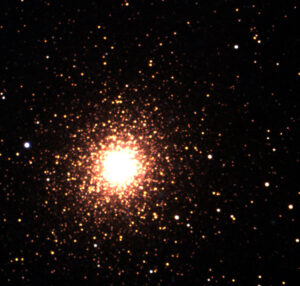
I also used the Afterglow tool to extract photometry data of NGC 2808 which was used in Cluster Astromancer for analysis. Using the data I was able to determine the following properties of NGC 2808 and generate the isochrone model shown in Figure 5.
| RA (mas/yr) | Dec (mas/yr) | Distance (kpc) | Log(Age) | Metallicity (solar) | E(B-V) (mag) |
| 138.01 | -64.86 | 12.6 | 9.9 | -1.1 | 0.17 |
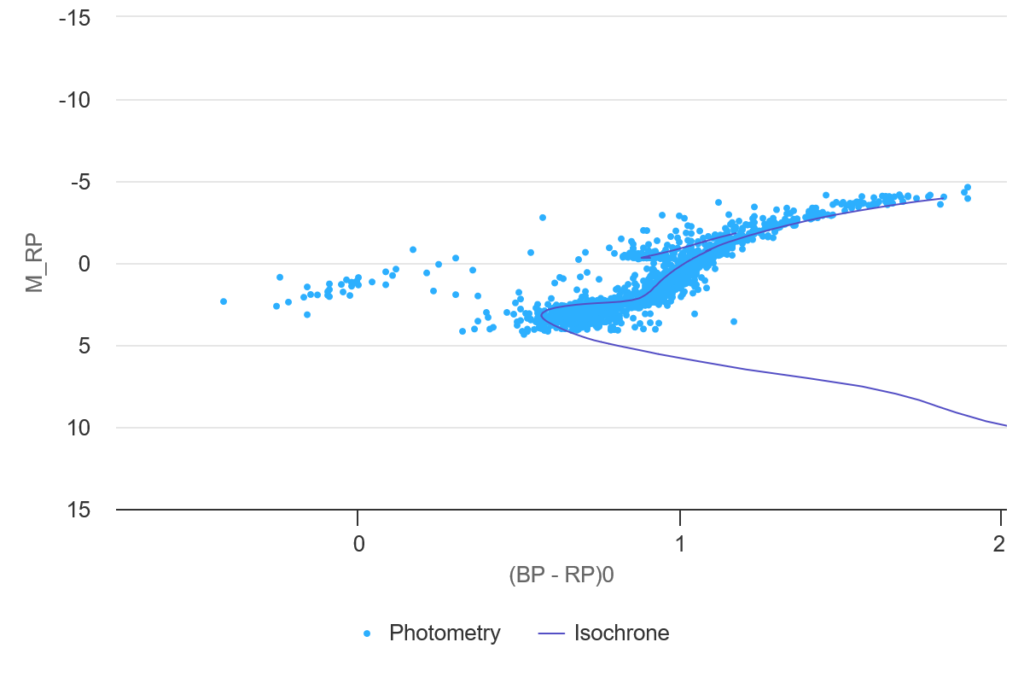
Using the newly determined E(B-V) value, I was able to go back and use the Afterglow tool to adjust my original image of NGC 2808, as shown in Figure 4, to account for reddening resulting in the following image (Figure 6).

It is difficult to analyze this image due to both the enormous size of NGC 2808 and its large distance from Earth resulting in an unclear image although, I was still able to make out a few straggling blue stars in the image. A large blue star in particular can be seen to the left of the cluster.
Referencing data found by Karchenko et al (2013) in the Milky Way Star Cluster Catalogue (MWSC) produced the following table.
| Distance (kpc) | Log(Age) | Metallicity (solar) | E(B-V) (mag) |
| 9.612 | 10.1 | -1.045 | 0.221 |
When using data from the MWSC data in Cluster Astromancer, I was able to produce the following Isochrone model (Figure 7).
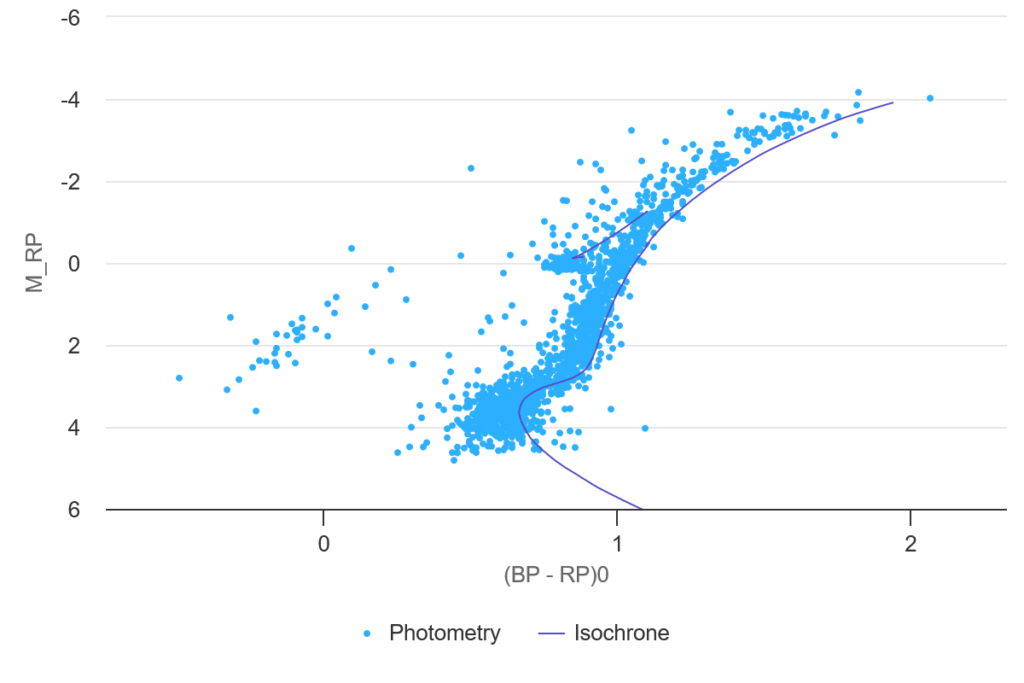
I find the model generated by the data from the MWSC to be less accurate than my own model (Figure 5). Upon further investigation however, I believe this is because the Log(Age) value from the MWSC is slightly too large. Reducing the Log(Age) value from 10.1 to a value between 10 and 9.95 would shift the model to the right aligning it more coherently with the stars and producing a far more accurate model. Aside from this, both models (Figure 5 and Figure 7) are very close to identical.
Overall, this cluster project was the highlight of my life (up to this point). I found studying and researching this cluster to be very enjoyable and gaining an understanding of this cluster to have imbued me with a deep and profound feeling of satisfaction and accomplishment. I feel I’ve gained a deep personal connection with NGC 2808 and I can’t wait to explore and discover more in my pursuit of knowledge and greatness.